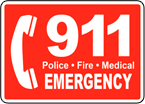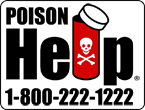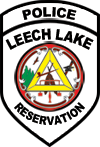- LLBO Home
- Administration
Administration
Child Support Enf.DMVDuluth OfficeEconomic DevelopmentEnrollmentFinancial ServicesFleet ManagementLegal DepartmentMIS
Opioid TreatmentPurchasingSecurityT.E.R.O.TransitTribal DevelopmentTwin Cities OfficeUtilities Commission
Tribal Court
Court HomeCourt FormsCourt FinesCourt Codes
Attorney ProceduresBaMeNim AnishinaabegDiversionTribal Court Awards
Tribal Police
LLTPD HomeAnimal ControlDomestic ViolenceMeth Coordinator Prescription Drug
- Education
- Health Division
Health Programs
AmbulanceBehavioral H.Car Seat ProgramD. Fitness CenterENPEmergency Prep.Environmental HealthFamily Spirit
Food DistributionHome Health CHRMed TransportationNutrition ServicesOccupational HealthPatient BenefitsS.H.I.P.
Elder & Disability Services
Nursing programs
Community ClinicsWadiswan "Nest"WIC
Child & Teen ClinicLL Diabetes ClinicTransform Rez
Health Reports
- Human Services
Addictions & Dependecies Program
A & D ProgramAdolescent OutpatientAhnjiBeMahDis HouseAssessment UnitFamily Violence Prevent
Outpatient TreatmentRecovery MaintenanceRelapse PreventionWomen's Halfway HouseWomen's Services
Child Welfare
Adoption ServicesChild Abuse PreventionChild ProtectionFamily Preservation
Foster CareParent Support ServicesTruancy PreventionYouth Living Skills
Other Human Serviecs Programs
- Res. Services
Reservation Services
EngineeringFacilities ManagementHeavy EquipmentRoads & SurveySanitation
Small Vehicle RepairSolid WasteWell & SepticWell Drilling
Community Services
- Resource Mgmt.
- Tribal Assistance
Tribal Assistance Programs
Contact Us


(218) 335-8277 Phone
(888) 622-9225 Toll-free
(218) 335-8297 Fax
Mailing Address
PO Box 187
Cass Lake, MN 56633
Physical Address
200 Sail Star Drive NE
Cass Lake, MN 56633
Hours of Operation
Open 24 hours/7 days
Office Hours
Monday - Friday
8:00 a.m. - 4:30 p.m.
Service Area
Leech Lake Reservation
Sex Offender Information
 In 1996 the Minnesota Legislature passed the Community Notification Law 1. Minnesota Statutes 244.052) that permitted the release of information about certain offenders in Minnesota. The intent of the legislature was as follows:
In 1996 the Minnesota Legislature passed the Community Notification Law 1. Minnesota Statutes 244.052) that permitted the release of information about certain offenders in Minnesota. The intent of the legislature was as follows:
"If members of the public are provided adequate notice and information about an offender’s release, the community can develop constructive plans to prepare themselves."
Prior to this law, most information regarding predatory offenders was known to law enforcement agencies, and others in the criminal justice system, but beyond those agencies and individuals the information about offenders was classified as either private or confidential.
Community Notification allows some information about some offenders to be converted from private or confidential information to public information. In Minnesota the amount of information, and the scope of individuals to whom information is released, is indicated by the risk level assigned to the offender by an End of Confinement Review Committee (ECRC) established by the notification law, and operated by the Department of Corrections (DOC). The higher number risk level assigned to the offenders, the more information can be released, and the broader the audience that will receive that information. Law enforcement agencies where the offenders reside have the responsibility for the notification of their communities under this law.
Level One
Level One offenders are offenders who are determined to be at a lower risk to re-offend. Police agencies may open a file on these offenders and may release information about the release of the offender to victims of, and witnesses to the crime, other law enforcement agencies, and anyone identified by the prosecuting attorney to receive the information.
Level Two
Level Two offenders are determined to be at a moderate risk to re-offend. Police agencies may release information to anyone included in the Level One information release, and in addition may notify organizations about the offender's release. These organizations may include schools, daycare centers, and other organizations where individuals who may become victims of the offender are regularly found. Law enforcement will make the decision on which organizations to notify based on the offender's past pattern of behavior. Law enforcement officials may also choose to notify certain individuals that they determine to be at possible risk from the offender, but this is not a wide spread community notification. Organizations notified about a Level Two offender are given this information to protect individuals in their care while they are on or near the premises of those organizations. The information is not to be re-distributed by those organizations that have been notified.
Level Three
Level Three offenders have been determined to be at the highest risk for re-offense out of all of the three risk levels. Law enforcement may notify all individuals and agencies included in Level One and Level Two notifications, and may also distribute information about the offender to everyone else in the community. In addition, officials may use the media and other distribution methods to get this information to the public. According to law enforcement policy, enforcement officials hold public meetings in the areas where Level Three offenders reside. At those meetings, information about the notification process, about the registration of predatory offenders, and information about the general population of these offenders is distributed and discussed. In addition, information about a specific offender or offenders is released. The information includes a general area of residence, a description of the offender (with photograph), and a description of the pattern of behavior that this offender has been known to display in the past. This disclosure does not apply to offenders that are in licensed residential facilities where staff have been trained to manage sexual offenders (halfway houses) nor does it apply to offenders in secure hospital facilities operated by the Department of Human Services (hospitals at Moose Lake and St. Peter, Minnesota).
Beginning August 1, 2000 there is another way that the public can get information about Level Three offenders. The Minnesota Legislature, as part of the passage of Katie's Law (named after Katie Poirier) in the 2000 legislative session, directed the Commissioner of Corrections to establish a site on the World Wide Web that contains information about the Level Three offenders living in the community. Within two days after law enforcement officials have held a notification meeting on an offender, those officials determine what information they want released on this web site, and forward the information to the DOC. The DOC then posts this information, and maintains the changes in location that may occur with the offenders. This site does not contain information about Level One or Level Two offenders. Please review the information contained on this site carefully. The intent of the law, and the actions of law enforcement officials and the DOC is to provide information that will improve public safety. This web site can be access at the link below.
Community Notification Act
When a Predatory Offender moves to a new location they MUST register with the Minnesota Department of Public Safety Predatory Offender Unit. The law also provides for community notification about certain adult predatory offenders who have been incarcerated by the Minnesota Department of Human Services (DHS).
Minnesota Department of Corrections - Community Notification Act. Read more ►
Intensive Supervised Release
The Intensive Supervision Program requires that certain high-risk offenders be identified while in prison, and that those offenders be placed on Intesive Supervised Release (ISR) upon release from prison. Offenders ramain on ISR until they successfully complete the program or until they reach expriation of their sentence.
Minnesota Department of Corrections - Intensive Supervised Release. Read more ►



